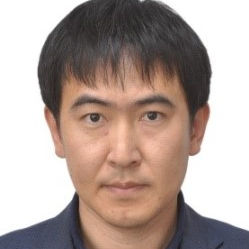Application of UV Technologies in Water and Wastewater Treatment
A special issue of Water (ISSN 2073-4441). This special issue belongs to the section "Wastewater Treatment and Reuse".
Deadline for manuscript submissions: closed (30 June 2022) | Viewed by 3910
Special Issue Editors
Interests: UV disinfection; UV-based advanced oxidation process; micropollutant degradation; water disinfection and disinfection byproduct control
Interests: UV disinfection; UV advanced oxidation process; advanced treatment process for water and wastewater
Special Issues, Collections and Topics in MDPI journals
Interests: drinking water treatment; water disinfection; formation and control of disinfection byproducts; organic pollutant degradation; UV-based advanced oxidation process; research and application of new UV technology including UV-LED and UV-Laser
Special Issue Information
Dear Colleagues,
Ultraviolet (UV) technologies have been widely applied to water and wastewater disinfection due to their high sterilization efficiency and property of no disinfection byproduct (DBP) generation. In addition, UV-based advanced oxidation processes (AOPs) have also become a hot issue in water treatment, such as UV/H2O2, UV/O3, UV/chlorine, UV/peroxysulphate, and so on. The strong oxidizing radicals produced during UV-based AOPs can accelerate both microbial inactivation and pollutant degradation. UV technologies have been proved to have many advantages in water and wastewater treatment, but identifying how to use it efficiently and safely remains to be further studied. At present, low- and medium-pressure UV mercury lamps are still the most commonly used UV sources in water plants. With the development of UV technology, some new UV sources (such as vacuum ultraviolet (VUV), UV-LED, etc.) have attracted more and more attention in the research field of water treatment. Therefore, it is worth exploring whether the introduction of these new UV light sources will make a difference in water and wastewater treatment. This Special Issue is devoted to the application of different UV technologies in water and wastewater treatment, including the improvement of traditional UV technologies and the development of novel UV light sources, as well as water security during UV treatment.
Prof. Dr. Bin Xu
Dr. Wenjun Sun
Dr. Tian-Yang Zhang
Guest Editors
Manuscript Submission Information
Manuscripts should be submitted online at www.mdpi.com by registering and logging in to this website. Once you are registered, click here to go to the submission form. Manuscripts can be submitted until the deadline. All submissions that pass pre-check are peer-reviewed. Accepted papers will be published continuously in the journal (as soon as accepted) and will be listed together on the special issue website. Research articles, review articles as well as short communications are invited. For planned papers, a title and short abstract (about 100 words) can be sent to the Editorial Office for announcement on this website.
Submitted manuscripts should not have been published previously, nor be under consideration for publication elsewhere (except conference proceedings papers). All manuscripts are thoroughly refereed through a single-blind peer-review process. A guide for authors and other relevant information for submission of manuscripts is available on the Instructions for Authors page. Water is an international peer-reviewed open access semimonthly journal published by MDPI.
Please visit the Instructions for Authors page before submitting a manuscript. The Article Processing Charge (APC) for publication in this open access journal is 2600 CHF (Swiss Francs). Submitted papers should be well formatted and use good English. Authors may use MDPI's English editing service prior to publication or during author revisions.
Keywords
- UV technologies
- UV-based advanced oxidation processes
- microbial inactivation
- disinfection
- disinfection byproducts
- pollutant degradation
- photocatalysis
- emerging contaminants
- water and wastewater treatment







